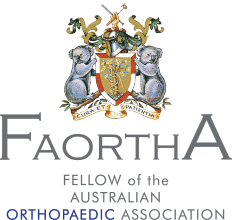Knee
Replacement
Drawing on extensive training, experience and robotic surgery expertise, Dr Damian Smith has consistently delivered successful outcomes for knee replacement surgery.
Book an Appointment
If you’re experiencing severe knee pain that limits your everyday activities or persistent knee inflammation and swelling, you may be a candidate for a knee replacement.
Total knee replacement, also known as total knee arthroplasty, is a surgical procedure that involves replacing damaged and worn-out surfaces of the knee joint with a prosthesis. All or part thereof the surfaces of the tibia, femur and patella may be replaced in knee replacement surgery. This surgery has become commonplace with about one in four patients over the age of 65 suffering with some form of arthritis. Knee replacement surgery has a high success rate in improving patient’s mobility and relieving pain. 90% of patients are very pleased with their outcome after knee replacement surgery. Approximately 90% of knee replacements are still functioning well 10-15 years down the track and should a prosthesis loosen or wear out with time, revision joint replacement surgery is available.
Indications for Knee Replacement
Osteoarthritis, or wear and tear arthritis, is the most common indication for knee replacement surgery. Other causes include inflammatory conditions such as rheumatoid arthritis, traumatic arthritis following injury to the knee, chronic instability and deformity.
Your Orthopaedic Surgeon may recommend joint replacement surgery for patients with these conditions that have pain, stiffness and/or deformity that is intrusive and limiting their mobility and quality of life despite maximal non-operative treatments.
Surgical Procedure
Dr Smith is highly trained in computer navigated and robotic assisted joint replacement surgeries. The procedure itself takes approximately 90 minutes and is performed under regional block such as spinal and/or general anaesthetic. An incision is made over the front of the knee exposing the arthritic and damaged joint surfaces. Using surgical tools guided by computer navigated and robotic assisted technologies, Dr Smith removes or cuts away the damaged joint surfaces and shapes the ends of the bones to accommodate the prosthesis or implants. A plastic insert which acts as a cushion is placed in-between the components on the femur and tibia. Often the patella, or knee cap, is also affected with arthritis and if that is the case, the arthritic surface of the patella can also be shaved away and a plastic insert fixed to the patella can be placed which then allows the patella to move smoothly over the new joint replacement.
Post-operative Recovery and Rehabilitation
Following your surgery you will be taken to the recovery ward prior to returning to the surgical ward. You will be seen by the hospital physiotherapists early and be given exercises to start strengthening and moving the knee joint and you will be encouraged to stand and walk the afternoon of your surgery or early the next morning. The average length of stay in hospital is 3-5 days. You will then attend regular physiotherapy and rehabilitation sessions as an outpatient over a six week period. These rehabilitation sessions are very important in your ultimate outcome and will assist you in the early days after your surgery with minimising swelling, improving pain control, improving strength, range of motion and your overall mobility.
Risks and Complications
All medical treatments and surgical procedures have possible risks and complications. Everyone involved in your treatment and care makes every effort to minimise your risks and ensure that you have a successful outcome. If you have any particular concerns or questions, please discuss these with Dr Smith prior to embarking on any treatment plan.
Possible risks and complications include, but are not limited to, anaesthetic-related complications, infection, bleeding (possibly requiring re-operation or blood transfusion), injury to major nerves or blood vessels, fracture, deep vein thrombosis or pulmonary embolism (blood clots), joint stiffness, thick or discoloured scars, numbness around the scar and front of the knee, loosening of the implant requiring further surgery and complex regional pain syndrome.
Why choose
us?
-
Integrative approach
-
Advanced technology
-
Highly trained and experienced
-
Lower Limb Specialists
-
Personalised care
- Learn more


